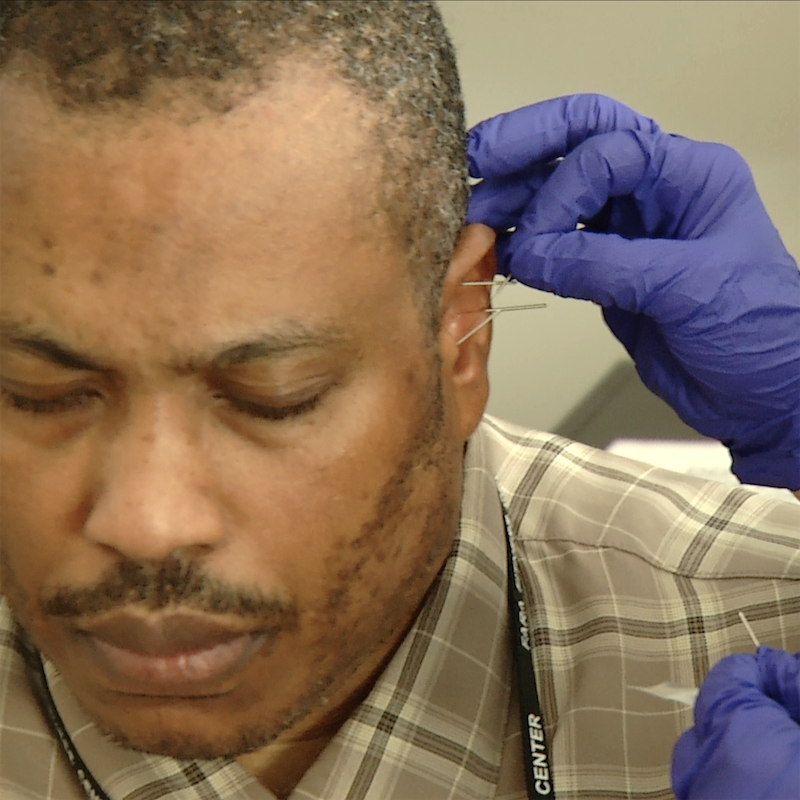Veterans Are in Pain, According to Analysis of National Health Survey

Almost two-thirds of U.S. military veterans say they are in pain, and 9.1 percent say their pain is severe. A recent analysis of data from a national survey found that veterans were also more likely than nonveterans to have a range of painful health conditions—such as back pain and joint pain—and to classify their pain as severe. These findings, which provide the first national estimates of numbers of veterans with severe pain and differences by age and sex, come from the National Center for Complementary and Integrative Health (NCCIH), and are published in the Journal of Pain. They are based on data from the 2010–2014 National Health Interview Survey, a large survey conducted annually by the Centers for Disease Control and Prevention’s National Center for Health Statistics.
Previous research has established the prevalence of pain as a significant burden among U.S. veterans; however, this study is the first to compare pain severity in a nationally representative population of veterans and nonveterans, as well as pain associated with specific health conditions.
An NCCIH researcher analyzed data on 67,696 adults. Participants responded to questions about the persistence and bothersomeness of self-reported pain during the 3 months prior to the survey.
Among the findings from this analysis:
- More veterans (65.5%) than nonveterans (56.4%) reported having pain in the previous 3 months.
- A higher proportion of veterans (9.1%) reported having severe pain than nonveterans (6.3%).
- Veterans were more likely than nonveterans to have any back pain (32.8%), back pain with or without sciatica (12.2%, 20.5%), or joint pain (43.6%), but less likely to have jaw pain (3.6%) or migraines (10.0%).
- The prevalence of severe pain was significantly higher in veterans with back pain (21.6%), jaw pain (37.5%), severe headaches or migraine (26.4%), and neck pain (27.7%) than in nonveterans with these conditions.
- For nonveterans, as age increased, the prevalence of any pain and severe pain also increased; however, for veterans, those aged 50 to 59 were most likely to have severe pain, while the youngest and oldest groups were least likely to have severe pain.
- Veterans aged 18?39 and 50?59 were more likely than nonveterans of the same ages to have any pain. Veterans aged 18?39 were also more likely to have severe pain than nonveterans in the same age group. However, veterans aged 70 or older were less likely to have severe pain than similarly aged nonveterans.
- Male veterans (9.0%) were more likely to report severe pain than male nonveterans (4.7%); however, no difference was seen between the two female groups.
The survey did not collect pain treatment information, so the researcher was unable to determine if differences in treatment could have further explained differences in the participants’ pain experiences. The researcher also noted that the younger veterans (aged 18?39) are undoubtedly overrepresented by those who served during the wars in Afghanistan and Iraq. Although the analysis was not able to determine whether these younger veterans with severe pain were in pain despite treatment or because they were not getting treatment, the researcher suggests that some veterans would benefit from a revised pain management plan that addresses the full range of biological, psychological, and social effects of pain on the individual. For others, services may be needed to help them manage the impact of severe pain on their daily lives.
Reference
- Nahin RL. Severe pain in veterans: the impact of age and sex, and comparisons to the general population. Journal of Pain. 2017;18(3):247-54.
Publication Date: November 22, 2016